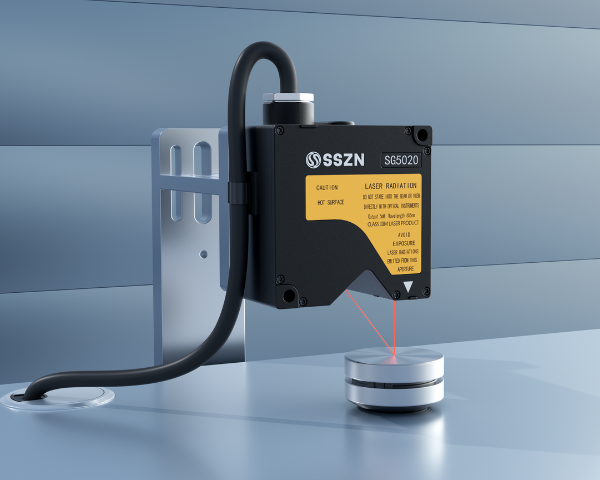Sound System Vibration Detection with SinceVision Laser Displacement Sensor
Industry pain points and demands
Detecting the vibration amplitude and frequency of sound system is critical to ensuring their performance and sound quality. By measuring these parameters, the sound system's ability to reproduce sound accurately across various frequencies can be validated, avoiding audio distortion or deformation.
This process serves as a fundamental purpose of sound system testing and analysis, contributing to the optimization of device performance and meeting the requirements of different usage scenarios.
Industries Benefiting from This Technology: Construction, Automotive, Aerospace and Defense, Audiometry and R&D.
Physical Picture or Imaging Effect Picture
SinceVision Solution: SG5020 Laser Displacement Sensor
01High-Speed Data Capture for Real-Time Analysis: With a frame rate of up to 590kHz, the SG5020 rapidly collects data, providing real-time insights into vibration patterns and irregularities that could compromise sound performance.
02Detecting Surface Defects with Precision: By scanning surfaces with unmatched accuracy, the SG5020 can identify minute defects and variations that traditional methods often overlook. This capability is critical for optimizing sound system performance in various environments, from automotive audio systems to precision laboratory setups.
03Non-Contact Monitoring for Sensitive Equipment: Many high-performance sound systems require delicate handling, making non-contact sensors like the SG5020 invaluable. By eliminating physical contact, manufacturers can ensure precise measurements without risking damage to sensitive equipment.
Camera Selection
| Model number | SG5020/SG5025 | ||
| Reference distance (CD) | 20mm | ||
| Measuring range | -3mm~3mm | ||
| Light source | Light source wavelength | 655nm | |
| Laser class | Class 2 | ||
| Laser output power | 5mW | ||
| Spot diameter (spot size) | Round spot | Φ45μm | |
| Wide spot | 45×400μm | ||
Repetition accuracy ① | 0.02μm | ||
| linearity | ±0.02% of F.S. | ||
| Temperature characteristic | 0.01% F.S./℃ | ||
| Sampling frequency (Hz) | 1/2/5/10/20/50 KHZ / 88/200/400/590 (optional 10 level) | ||
| Input/output | Communication port | One 100Base-TX/1000Base-T Ethernet interface, one RS232 | |
| Analog output | 1 analog output, support analog voltage and analog current switching | ||
| Encoder input | 1 group difference encoder | ||
| IO input | 14, support timing, zero, reset, laser control, formula switching and other functions | ||
| IO output | 16 channels, determine the status output | ||
| Storage temperature | -20 ~ 70℃ | ||
| Operating temperature | 0 ~ 50 ° C | ||
| Working humidity | 35% to 85% no condensation | ||
| EFT protection | Power port 2kV/5 or 100kHz, signal port 1kV/5 or 100kHz, in accordance with IEC 61000-4-4 standards | ||
| ESD protection | Contact discharge is 4kV and air discharge is 8kV, in line with IEC 61000-4-2 standards | ||
| Vibration | 10Gs (10-500Hz) Compliant with IEC 68-2-6 Fc standard | ||
| Impact | 50Gs/3ms per axis, complies with IEC 68-2-27 Ea standard | ||
| IP level | IP67, complies with IEC 60529 standard | ||
| Dimensions (mm) | 60×61×41 | ||
| Data cable (wiring) model | SCB-GICAM-HA2-3m/5m/10m | ||
| Weight (including cables) | 324g | ||







